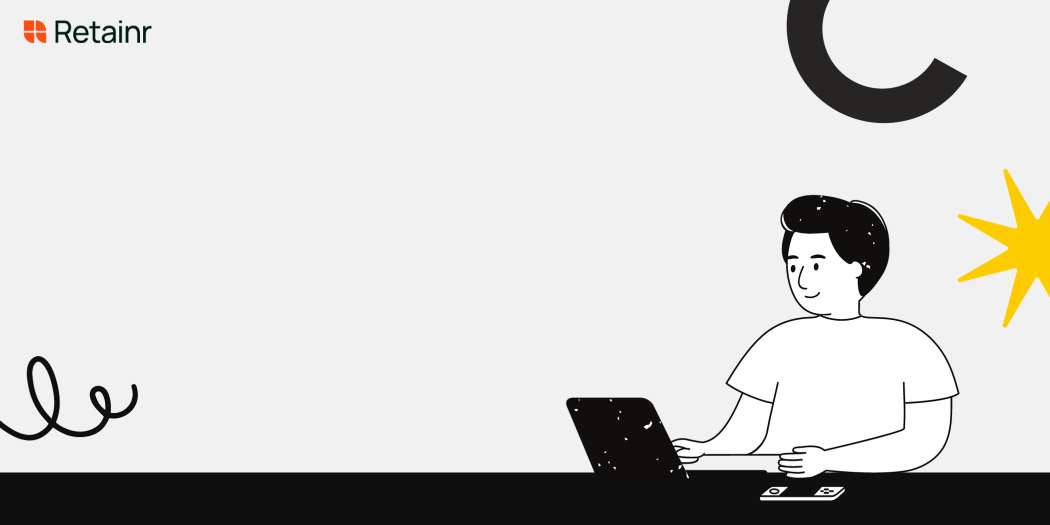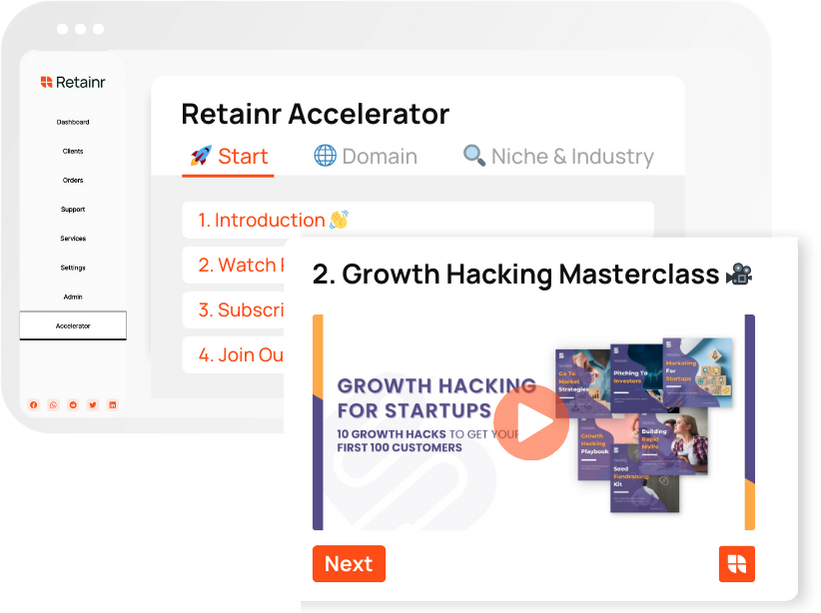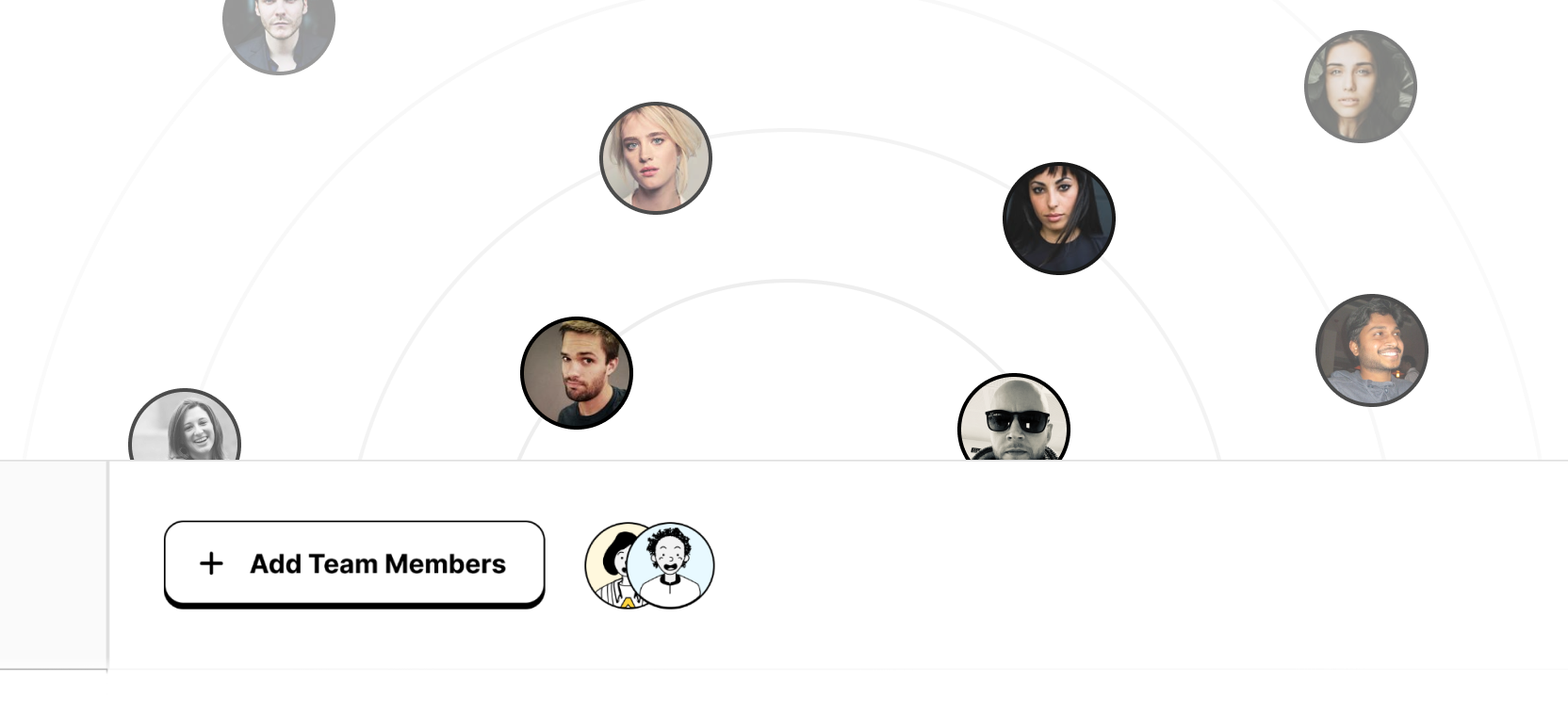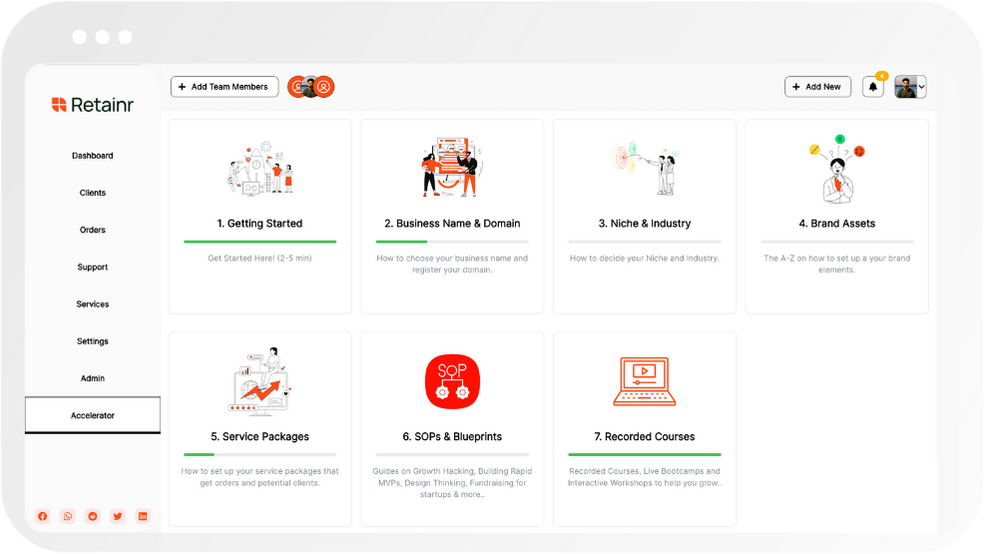
Project Tracking: Best Practices for Efficient Team Collaboration
Build with Retainr
Sell your products and services, manage clients, orders, payments, automate your client onboarding and management with your own branded web application.
Get Started1. What are some best practices for project tracking in efficient team collaboration?
Effective Communication and Documentation
One of the best practices for project tracking in a team collaboration is effective communication and maintaining well-documented records. Team members should frequently discuss the progress of the project on communication platforms, keeping everyone updated on their tasks. Use of collaboration tools like Slack, Trello, or Basecamp can facilitate more efficient and streamlined communication. Taking meeting minutes and documenting them also allows team members to look back and understand what was discussed previously.
- Use collaboration tools for communication
- Keep track of meeting minutes
- Update the team on progress regularly
Setting Clear Objectives and Milestones
Another crucial practice is to set clear objectives and milestones. These act as checkpoints to monitor progress and keep the team focused on the project's end goal. Define these milestones at the beginning of a project and make sure all team members are aware of them. They should be measurable, specific, attainable, relevant, and timed (SMART). This approach ensures that progress is tangible, making tracking easier and more rewarding.
| SMART Milestones | |
|---|---|
| Specific | Clearly defined and understood by all members |
| Measurable | Progress can be quantified or qualified |
| Attainable | Within the team's capabilities and resources |
| Relevant | Aligns with the project's overall goal |
| Timed | Has a specific deadline or timeframe |
Regular Follow-ups and Reviews
Conducting regular follow-ups and reviews is another practice that enhances project tracking. Regular updates, either daily or weekly, can provide immediate feedback, address challenges, and recognize accomplishments. Peer reviews on individual tasks can also help identify potential areas of improvement and foster an environment of learning and continuous improvement.
- Conduct daily or weekly updates
- Use peer reviews for tasks
- Recognize and address challenges promptly
2. How can project tracking improve team collaboration and efficiency?
Improving Team Collaboration Through Project Tracking
Project tracking plays a pivotal role in fostering team collaboration. The centralization of all task information in one accessible place allows everyone to be informed about the project’s progress and the tasks each member is responsible for. This transparency fosters trust and accountability among team members. By offering a clear overview of your project schedule and milestones, a tracking tool ensures no team member is left behind. Hence:
- Project tracking tools build a single source of truth where everyone can check real-time progress.
- These tools assist in creating an accountability system where each member can view others' tasks, promoting collective responsibility.
- They ensure every team member is aware of the project schedule and important milestones, contributing to team cohesion and project completion in a timely manner.
Boosting Efficiency using Project Tracking
Project tracking measures progress, identifying bottlenecks, and inefficiencies that need resolution. The right tracker will point out tasks that are lagging behind, the team members that are overworked, and the deadlines that are approaching. Therefore:
| Benefits |
|---|
| It helps identify the tasks needing immediate attention. |
| It alerts about team members who might be overloaded, showcasing the need for task reassignment. |
| It generates timely alerts regarding approaching deadlines, removing the element of surprise and facilitating better planning. |
Conclusion
In conclusion, project tracking systems are an effective way to enhance both collaboration and efficiency within your team. They offer a platform that ensures everyone is on the same page and is aware of their responsibilities. At the same time, these systems streamline the project workflow, identifying possible challenges for the team and facilitating timely resolutions.
3. What are the tools commonly used for project tracking in team collaboration?
Common Tools Used in Project Tracking
Effective project tracking requires the use of efficient tools that facilitate team collaboration. These tools help monitor project progress, track team activities, and ensure all stakeholders remain on the same page. There are numerous project tracking tools available in the market today, but a few stand out due to their effectiveness and ease of use. These include:
- Microsoft Project: This is a powerful, all-rounded tool that suits large projects with many sub-projects and tasks.
- Asana: This tool is known for its simple, user-friendly interface and powerful project tracking capabilities
- Basecamp: A popular option for many teams, thanks to its versatility and affordable pricing
- Trello: A visually appealing tool that uses Kanban boards to represent projects and tasks
- Jira: Best suited for software development projects, offering agile project management features
Project Tracking Tools Comparison
To help you choose the tool most suitable for your needs, below is a comparison based on pricing, features, and usability:
| Tool | Pricing | Top Features | Usability |
|---|---|---|---|
| Microsoft Project | Starting at $10/user/month | Gantt charts, resource management, costing tools | Best for large corporations |
| Asana | Free version available, premium starting at $10.99/user/month | To-do lists, Kanban boards, workload view | Easy to use for all team sizes |
| Basecamp | $99/month flat rate | To-do lists, file sharing, schedule and deadlines, team messaging | Best for small to medium team sizes |
| Trello | Free version available, premium starting at $9.99/user/month | Kanban boards, deadline reminders, integration capabilities | Simple and visual for individuals and teams |
| Jira | Starting at $10/month for up to 10 users | Scrum and Kanban boards, roadmaps, backlog prioritization | Most efficient for software development teams |
Choosing the Right Project Tracking Tool
Choosing the right project tracking tool often depends on the specific needs of the team and the nature of the project. Consider the size of the team, project complexity, and budget while making a decision. The tool adopted should be intuitive, easily accessible, and offer extensive features for project planning, tracking, and collaboration. With the right tool, teams can track their projects effectively, ensuring all tasks are completed on time and within budget.
4. How often should project tracking be updated for efficient team collaboration?
Frequency of Project Tracking Updates
Regular project tracking is crucial for effective team collaboration, but determining the optimal frequency of updates depends on several factors such as project complexity, team size, and project duration. While some teams may benefit from daily updates, complex projects may require more frequent updates for efficient collaboration. Understanding these factors can help managers set suitable project tracking update frequencies.
- Daily: For most projects, especially those with shorter durations or smaller teams, daily updates are effective. They ensure that everybody is on the same page and progress is accurately and promptly reported. Daily updates also help identify issues early before they can escalate.
- Twice per day: For larger, complex projects involving several teams, updates may be needed twice daily. This allows for real-time tracking of progress, immediate resolution of issues, and thorough communication between teams.
- Weekly or Bi-weekly: For longer-duration projects or those with established workflows and low risks, weekly or bi-weekly updates may be sufficient. These updates provide an overview of progress, resolve less urgent issues, and allow time for strategic planning.
Creating an Update Schedule
To manage the frequency of project tracking updates, teams can create an update schedule. This ensures consistency and allows team members to anticipate when updates will be provided so they can schedule their tasks accordingly. The table below presents an exemplary update schedule.
| Update Frequency | Meeting Time | Meeting Details |
|---|---|---|
| Daily | 10AM | 15-minute stand-up meeting to discuss completed tasks, planned tasks, and challenges. |
| Twice per day | 10AM, 4PM | First meeting to plan the day and second meeting to review progress and address issues. |
| Weekly | Monday, 10AM | 1-hour meeting to plan for the week, review last week's progress, and address issues. |
Flexible Update Frequencies
While it's important to have a consistent update schedule, flexibility is also crucial, especially in fast-paced or unpredictable project environments. Teams should be ready to increase update frequencies during critical project phases or in response to unforeseen issues. On the other hand, during quieter phases, less frequent updates may suffice. In conclusion, optimizing project tracking frequency is a balancing act that requires understanding the unique dynamics of each project.
5. What project tracking methods work best to ensure efficient team collaboration?
Method 1: Agile Methodologies
Agile methodologies have proven to be highly effective in enhancing team collaboration during project tracking. The approach involves breaking down the project into manageable units or 'sprints.' Below are the key aspects of Agile methodologies:
- Daily Stand-up Meetings: These are short meetings usually held at the beginning of the day to review the progress and outline the day's objectives.
- Scrum Board: This is a visual tool that shows work in progress, work yet to be started and work completed. It helps the team to know what tasks have been allocated to who and their progress.
- Sprint Reviews: This is a meeting that takes place at the end of each sprint to assess the work done and plan for the next sprint.
Method 2: Kanban Methodology
The Kanban methodology is another powerful project tracking method that fosters team collaboration. It originated from Toyota's Lean Manufacturing Concept and has been applied to project management. Here are its main features:
| Features | Description |
|---|---|
| Visual Kanban Boards | They provide an overview of the current work situation. They are usually divided into several columns representing the flow of work from start to finish. |
| Work in Progress limits | This refers to the maximum amount of work in progress allowed. Limits help control the flow of work, thus ensuring that team members are not overwhelmed. |
| Continuous delivery | This allows for immediate feedback and faster resolution of any issues arising. It also ensures the constant delivery of value to clients. |
Method 3: Gantt Charts
Gantt charts are timeline-based tools that give both a high-level overview of the project and a detailed view of the project schedule. This is how they enhance collaboration:
- Visual Representation: They provide a clear picture of when tasks are scheduled to start and end, dependencies between tasks, and the overall timeline of the project.
- Easy Update and Sharing: Modern Gantt chart tools are cloud-based and allow real-time updates and sharing. This helps team members to stay informed about their responsibilities and deadlines.
- Progress Tracking: Gantt Charts allow teams to monitor the progress of the project. This helps in ensuring that the project stays on track and any issues are promptly addressed.
6. How does project tracking aid in problem-solving and decision-making in a team?
Role of Project Tracking in Problem-Solving
Reality of project execution is that unforeseen challenges will emerge and that is when decisive problem-solving becomes essential. Project tracking plays a significant role in this aspect. Firstly, by making project progress transparent, it allows the team to identify problem areas at an early stage. Tasks that are running behind schedule, milestones that are being missed, inconsistencies in the work done - all get highlighted through efficient project tracking. Secondly, project tracking fosters a data-driven approach to problem-solving. By quantifying every aspect of the project, it allows teams to base their decisions on hard numbers rather than assumptions or guesses. They can evaluate the extent of the problem, analyze the possible reasons for it and determine the best course of action based on empirical evidence.
Project Tracking Facilitating Decision-Making
Project tracking also significantly aids in decision making for a team in several ways. The primary benefit is that it assists teams to prioritize tasks. Through project tracking, teams can clearly see the status of each task and the resources it is consuming, thereby allowing them to make decisions on the priority of tasks based on objective data. Additionally, project tracking helps in resource allocation. With a clear view of the project's progress, team leaders can allocate resources more efficiently. For instance, they can redirect resources from tasks that are ahead of schedule to those that are lagging behind.
| Project Tracking Benefit | Description |
|---|---|
| Early problem identification | Transparent project progress helps in detecting challenges early. |
| Data-driven problem-solving | Quantitative tracking allows decisions based on solid facts. |
| Task Prioritization | Clear view of each task’s status aids in deciding task priorities. |
| Resource Allocation | Understanding of project’s progress facilitates efficient resource allotment. |
In conclusion, project tracking is a pivotal tool for ensuring effective collaboration in teams by offering powerful support in problem-solving and decision-making.
7. How can project tracking help manage deadlines and deliverables in a team?
Efficient Management of Deadlines and Deliverables
Project tracking plays an integral role in the successful management of deadlines and deliverables within a team. It lays the foundation to streamline tasks, allocate resources effectively and maintain a clear visibility of project timelines. Here are some key ways in which project tracking aids in managing deadlines and deliverables:
- Vision and Clarity: It offers an overview of all the tasks and their respective due dates, thereby increasing overall efficiency and productivity.
- Alerts and Reminders: Project tracking can automatically send reminders to team members when deadlines are approaching, reducing chances of delays.
- Prioritization: By displaying all the tasks and their deadlines in one place, teams can prioritize tasks according to importancy and urgency.
Role of Project Tracking in Deliverable Management
The efficient handling of project deliverables is another crucial area where project tracking systems find great use. A well-designed project tracking system helps keep the team members aligned with the project objectives and deliverables. The following are some benefits:
| Role of Project Tracking | Benefits |
|---|---|
| Visibility | Provides visibility into the progress of each deliverable to help prevent any quality issues. |
| Alignment | Ensures everyone's work aligns with the project's objectives and deliverables. |
| Accountability | Induces accountability among team members by keeping track of who is responsible for each deliverable. |
Conclusion
In conclusion, project tracking is a critical aspect in managing both deadlines and deliverables. It provides a systematic approach to organize, manage and monitor every facet of a project efficiently, ensure timely completion and maintaining quality of deliverables. Hence, project tracking if used correctly, ensures the team operates like a well-oiled machine, enhancing the overall success of any project.
8. Which project tracking metrics are important for improving team efficiency and collaboration?
Key Project Tracking Metrics
There are several paramount project tracking metrics that can significantly improve team efficiency and collaboration. These metrics not only provide transparency and clarity, but also support effective decision making. They encompass:
- Task Completion Time: This tracks the time a team takes to complete specific tasks. It can help identify any delays or bottlenecks, thereby creating room for possible improvements in the workflow.
- Project Health: This is a comprehensive metric providing an overall assessment of project status, including timeline, budget, and goals. It helps predict potential risks and issues which may disrupt the project.
- Resource Utilization: This measures how efficiently a team utilizes resources. It can inform strategies to optimize resource allocation, reducing waste and boosting productivity.
- Team Member Workload: This provides insights into each team member's workload helping in balancing distribution and preventing the risk of burnout.
Evaluating Project Tracking Metrics
To use project tracking metrics effectively, regular evaluation is crucial for making continuous improvements. Below provides an example of an evaluation table for these metrics:
| Metric | Evaluation Frequency | Responsibility |
|---|---|---|
| Task Completion Time | Weekly | Project Manager |
| Project Health | Monthly | Project Manager |
| Resource Utilization | Quarterly | Resource Manager |
| Team Member Workload | Weekly | Team Lead |
Importance of Tracking Metrics
Effective project tracking is vital for teams to meet their goals and deliver value to clients. Tracking metrics ensure a project progresses as planned, any problems are promptly addressed, and team members remain focused on assigned tasks. By regularly monitoring these metrics, teams can collaborate more efficiently, make informed decisions, and drive their projects to success. Always be aware that different projects may call for different metrics, so, metric selection should be contextual and tailored to specific project needs.
9. How do I encourage my team to utilize project tracking tools for effective collaboration?
Encourage Training & Demonstrations
To encourage your team to effectively use project tracking tools, consider scheduling regular training sessions and demonstrations. This will not only increase their competence with the software but also make them comfortable with the platform.
- Interactive Tutorials: Interactive tutorials are a great way to train your team. These can be either in-person sessions or online webinars. During these sessions, show your team how to navigate through the platform, create tasks, update progress, and monitor project timelines. Engage them actively by letting them practice while you guide.
- Demonstrations: Use real project scenarios during demos to show your team how project tracking tools make tasks easier. Show them how these tools integrate with other software, improve communication, encourage transparency, and increase productivity. To make it more insightful, compare the outcomes with and without using the tools.
Provide Ongoing Support
After initial training, your team may face technical difficulties or tussles with the software. This can discourage them from continuing with the platform. Therefore, provide ongoing support to motivate them to use project tracking tools.
- Helpdesk Support: Have a dedicated team or individual who can provide immediate assistance if needed. This can be in the form of helpdesk support via chat or calls.
- Guide Materials: Supply your team with guide materials like tutorial videos, manuals, FAQs, etc. An off-hours FAQ list can be useful to answer basic questions that may arise.
Appreciate Active Users
Active users can play a significant role in promoting the use of project tracking tools. Recognize them and their efforts to encourage others.
| User | Reward |
|---|---|
| Team member regularly updating project status | Provide perks such as a free lunch, gift card, or shout-out in a team meeting |
| Team member helping others navigate the tool | Offer a more significant token of appreciation - maybe an additional day off, public recognition, or a special mention during performance reviews |
10. Can project tracking tools be personalized for each team member for increased efficiency and collaboration?
Personalizing Project Tracking Tools
Yes, project tracking tools can significantly be personalised for each team member with a view to increase efficiency and collaboration. Every team member has a unique role and by customizing their view within the project tracking tool, it allows them to focus on relevant tasks thus eliminating unnecessary information, which in turn, speeds up their work process. Customization can be achieved in different ways, including setting personalized dashboards, role-based access, custom fields, and personalized notifications.
Options for Personalization
- Personalized Dashboards: Software such as Trello, Asana, and Jira, allows users to customize their dashboards. Team members can create their personal boards or list of tasks that they are responsible for, and update progress in real-time.
- Role-Based Access: This feature allows each team member to gain access to the sections they need to complete their tasks. For instance, a developer doesn't necessarily need to view the marketing team tasks and vice versa.
- Custom Fields: These can be used to track extra task or project details that are specific to each team member's responsibilities. For instance, a developer may need fields for 'code review' or 'QA Test'.
- Personalized Notifications: By setting up personalized alerts, team members stay updated on the tasks they are assigned or those that directly affect their work, without being overloaded with other project updates.
Benefits of Personalization
| Benefits | Description |
|---|---|
| Improved Focus | Enabling personalized dashboards keeps team members focused on their individual tasks, leading to improved productivity. |
| Enhanced Collaboration | With role-based access, team members can easily find and share information relevant to their roles, enhancing collaboration. |
| Better Task Management | Custom fields provide details specific to a team member’s role leading to better task management. |
| Efficient Workflow | Personalized notifications means team members are only alerted about updates relevant to them, promoting an efficient workflow without distractions. |
Conclusion
Efficient Collaboration through Project Tracking
Efficient project management and tracking are quintessential for every team and business. It ensures timely completion of tasks, smooth communication, and increased productivity within the team. The key to achieving this lies in adopting best practices for project tracking, and this is where Retainr.io comes into play.
Best Practices for Project Tracking
The first step to successful project tracking is setting clear, achievable goals. These serve as a roadmap, guiding your team towards the project's final output. Regular progress checks and milestone evaluations are also crucial to staying on track. Doing this will not only ensure that deadlines aren't missed, but that any potential issues are acknowledged and addressed in a timely manner. Additionally, encourage open communication and feedback within the team. This generated transparency aids in identifying any underlying issues preventing efficient collaborations.
Retainr.io: Your Ultimate Project Tracking Tool
Switch to Retainr.io and streamline your project management process. Our whitelabel software allows you to sell, manage clients, orders, payments with your personalized, branded app. Its user-friendly interface and powerful features make the management process smooth, streamlined, and efficient.
Not only can you track your project's progress, but you can also communicate with your team, assign tasks, and set reminders - all under one roof. The software is designed to suit all your project tracking needs, making it a perfect companion for your team's collaboration efforts.
Take your team collaboration to the next level. Visit www.retainr.io and explore an innovative way to efficiently track your projects.
Boost Your Agency Growth
with Retainr Accelerator
Uncover secrets, strategies, and exclusive blueprints to take your agency's growth to the next level — from marketing insights to effective presentations and leveraging technology.

SOPs, Cheatsheets & Blueprints
Leverage 50+ SOPs (valued over $10K) offering practical guides, scripts, tools, hacks, templates, and cheat sheets to fast-track your startup's growth.
Connect with fellow entrepreneurs, share experiences, and get expert insights within our exclusive Facebook community.
.jpg)

Join a thriving community of growth hackers. Network, collaborate, and learn from like-minded entrepreneurs on a lifelong journey to success.

Gain expertise with recorded Courses, Live Bootcamps and interactive Workshops on topics like growth hacking, copywriting, no-code funnel building, performance marketing and more, taught by seasoned coaches & industry experts.

.jpg)

.jpeg)


